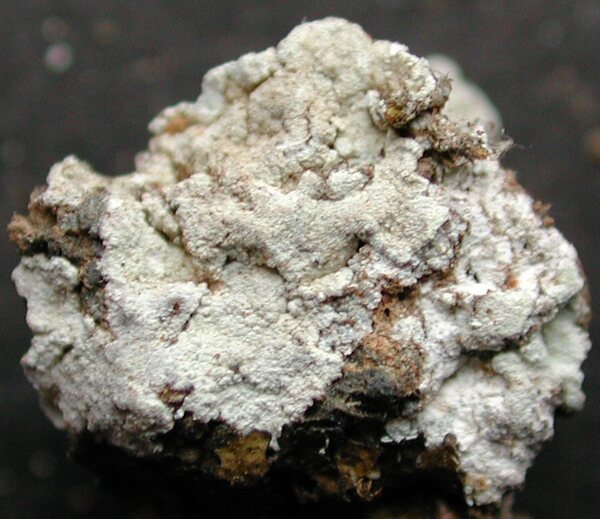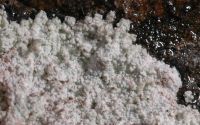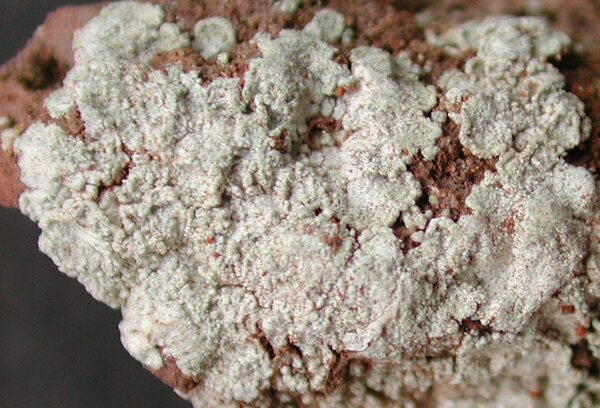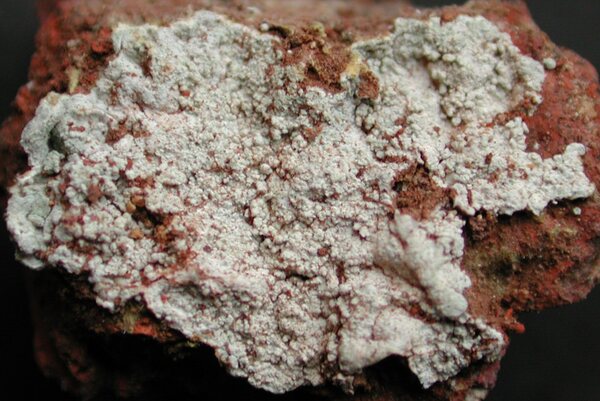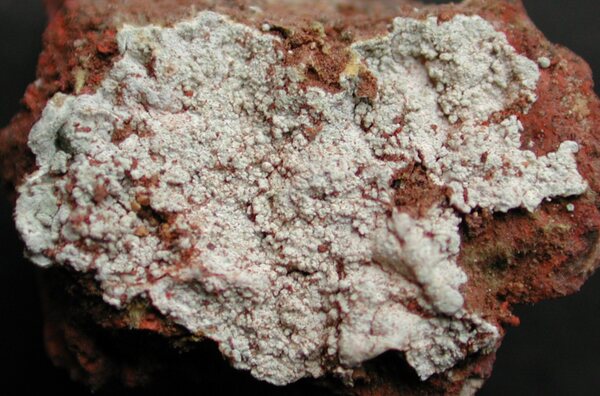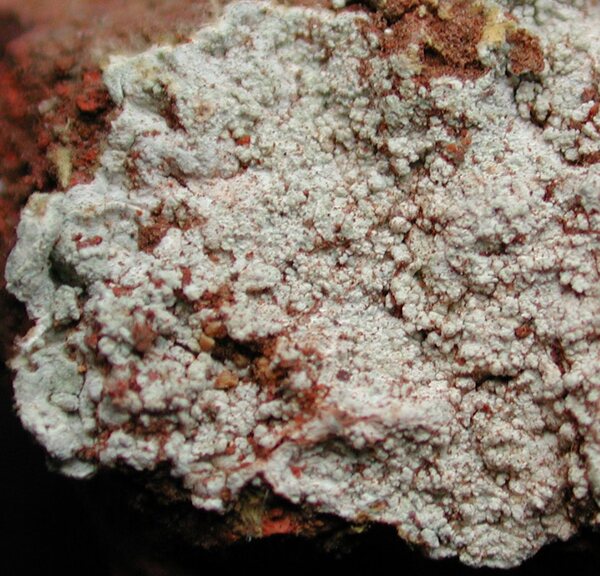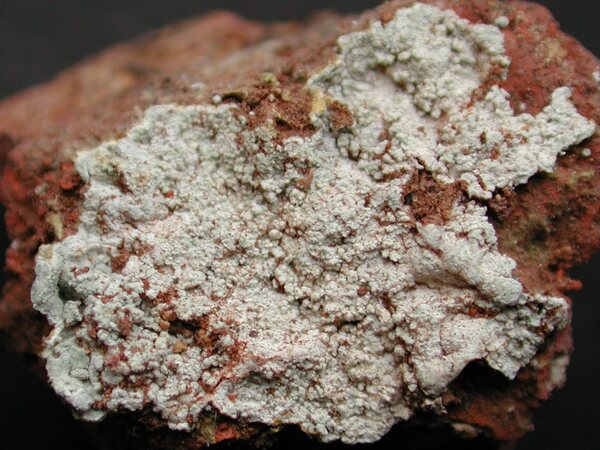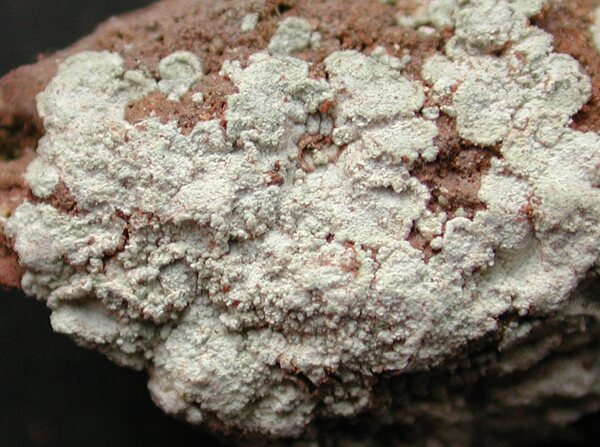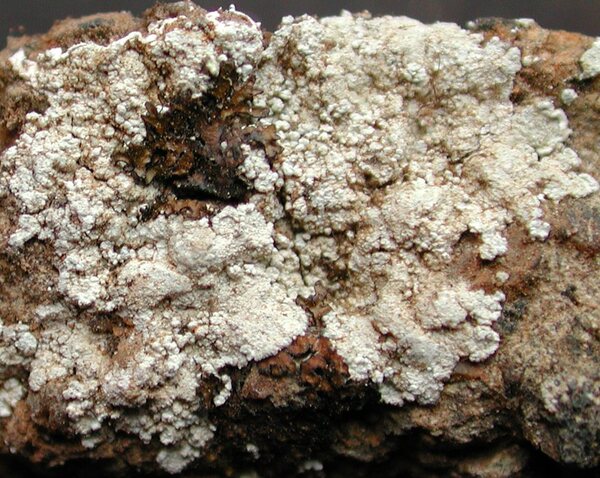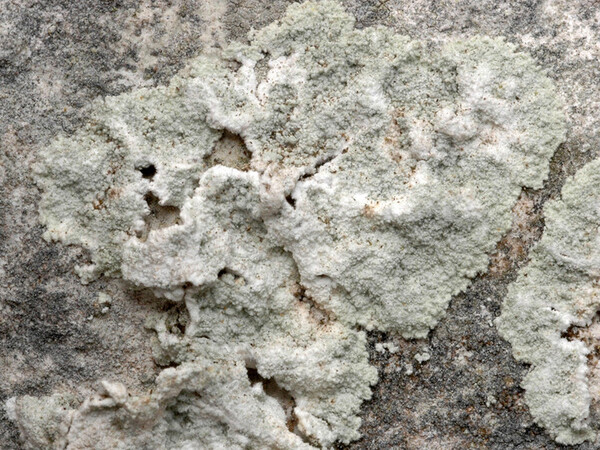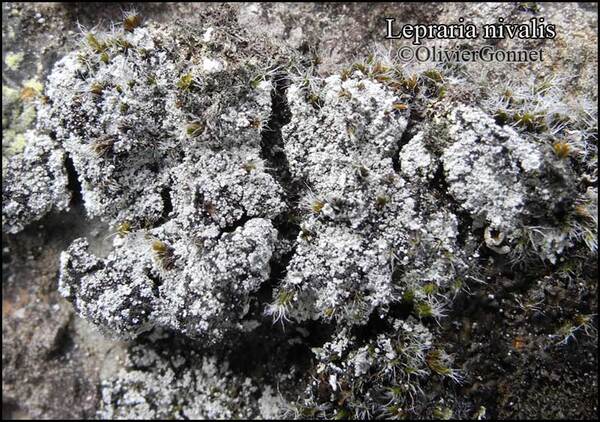Lepraria nivalis J.R. Laundon
Lichenologist, 24: 327, 1992.
Synonyms: Crocynia murorum B. de Lesd.; Lepraria crassissima auct. p.p. non (Hue) Lettau
Description: Thallus leprose, soft and cottony, cream-coloured, whitish or greenish white, sharply delimited, forming orbicular rosettes at least when young, sometimes almost sublobate, the upper surface often radially folded, consisting of a 0.2-0.5 mm thick mass of powdery, convex, soredia-like granules forming a compact, membranous crust which is easily detached from the substrate. Granules up to 60-200(-400) µm in diam., often with projecting hyphae. Medulla white, usually developed, the hyphae 1.5-5 µm thick, covered by numerous colourless granular crystals; lower surface without a layer of dark grey or brown hyphae. Photobiont chlorococcoid, the cells globose, c. 13 µm in diam. Spot tests: K+ yellow, C-, KC- or KC+ yellow, P+ reddish orange (but medulla P-), UV-. Chemistry: atranorin; different chemotypes, with or without protocetraric, fumarprotocetraric, roccellic, stictic, psoromic acids.
Growth form: Leprose
Photobiont: green algae other than Trentepohlia
Reproductive strategy: mainly asexual, by soredia, or soredia-like structures (e.g. blastidia)
In underhangs rarely wetted by rain
Commonnes-rarity: (info)
Alpine belt: extremely rare
Subalpine belt: very rare
Montane belt: rather rare
Dry submediterranean belt: rather common
Humid submediterranean belt: rather common
Padanian area: absent
pH of the substrata:
1 2 3 4 5
Solar irradiation:
1 2 3 4 5
Aridity:
1 2 3 4 5
Eutrophication:
1 2 3 4 5
Poleotolerance:
0 1 2 3
Altitudinal distribution:
1 2 3 4 5 6
Rarity
absent
extremely rare
very rare
rare
rather rare
rather common
common
very common
extremely common
Loading data...
Occurrence data
Predictive map
Growth form: Leprose
Photobiont: green algae other than Trentepohlia
Reproductive strategy: mainly asexual, by soredia, or soredia-like structures (e.g. blastidia)
In underhangs rarely wetted by rain
Commonnes-rarity: (info)
Alpine belt: extremely rare
Subalpine belt: very rare
Montane belt: rather rare
Dry submediterranean belt: rather common
Humid submediterranean belt: rather common
Padanian area: absent
pH of the substrata:
| 1 | 2 | 3 | 4 | 5 |
Solar irradiation:
| 1 | 2 | 3 | 4 | 5 |
Aridity:
| 1 | 2 | 3 | 4 | 5 |
Eutrophication:
| 1 | 2 | 3 | 4 | 5 |
Poleotolerance:
| 0 | 1 | 2 | 3 |
Altitudinal distribution:
| 1 | 2 | 3 | 4 | 5 | 6 |
Rarity
absent
extremely rare
very rare
rare
rather rare
rather common
common
very common
extremely common
Loading data...
Occurrence data
Predictive map


